What Is FSI?
Important Point
FSI Full-Form Floor Space Index
FSI (Floor Space Index) means Floor space index- the ratio of the built-up space on a plot into the Area of the plot is a regulation followed at the development control norms of many cities.
FSI directly tells us about the maximum permissible floor area, which may be built on a plot.
Numerically, FSI (Floor Space Index) is the ratio of building floor covered Area into the raw Area available on that plot/land. The floor space index value is changed from place to place. It also depends upon the type of building.
The FSI ratio value of a specific area is easily found in all the building bylaws for various cities and municipalities. Different cities or municipalities could have different bylaws and, consequently, different values.
The Formula for the Floor Space Index (FSI) Is
Floor Space Index = Floor Space Covered in all Floors / Area of the Plot
Also, read: What Is Water-Proofing | Types of Waterproofing
How to Calculate Fsi for Building?
FSI regulates by the DTCP ( Directorate of Town and Country Planning) department.
They will regulate the FSI (Floor Space Index) value based on city zone, type of building, and other amenities. Construction companies or builders can only build-up to the FSI imposed by the government.
FSI × Plot Area = Built-up Area
What Is Fsi in Construction?
FSI Example Calculation
To explain the Floor Space Index (FSI),
Assume you have a land of 3000 ft2 and you want to construct a building on that land.
The first thing, you need to know is what type of building you are planning to construct?
- Multi-storeyed Building – Exceeding 4 floors
- Special Building – more than 2 floors not exceeding 4 floors,
- Ordinary Building – Up to 2 floors less than 4 flats/dwelling units,
- There are other types of buildings also exist. (Industrial Building, Group housing, etc.).
For the sake of this example, we stick to these types.
Based on your building type, find out your zone Floor Space Index (FSI), which you may find on your state govt’s official website.
Generally, different buildings have different FSI (Floor Space Index) regardless of the location.
For the same location, FSI (Floor Space Index) can vary for ordinary buildings and special buildings.
- Let say your zone FSI is 1.5 for special buildings.
- Now you can build (3000*1.5 ) 4500 ft2 covered Area on your land.
- It can be either 2 floors of 2250 ft2 or 3 floors of 1500 ft2 without affecting other municipal rules.
What Is FAR?
FAR Full-Form Floor Area Ratio
The floor area ratio is the relationship between this total amount of usable floor area that a building has, or has been permitted to have and this total area of the lot where the building stands.
The ratio is determined by dividing the gross or total floor area of the building by the gross area of the lot. A higher ratio is more likely to indicate a dense or urban construction. Local governments use FAR (Floor Area Ratio) for zoning codes.
The Formula for the FAR (Floor Area Ratio) Is
Floor Area Ratio = Total Building Floor Area x 100 / Gross Lot Area
How to Calculate the Floor Area Ratio?
The FAR (Floor Aea Ratio) is calculated by dividing the total building floor area by the gross lot area.
Also, read: What Is Plaster | Plaster Ratio | History of Plastering | Requirements of Good Plaster
What Is Far in Construction?
FAR Example Calculation
FAR (Floor Area Ratio) is calculated by a simple formula –
A total covered area of all floors divided by this plot area.
Suppose the builder has got a plot of 1,500 m2, and the permissible FAR (Floor Area Ratio), according to development plans, is 1.5.
He is allowed to construct a building on 3,000 m2 of this plot.
It is the ratio of this total floor area in the building compared with the total plot area.
The constructed Area would include the walls, basic structure, lobby space, or staircase.
FAR (Floor Area Ratio) can be different inmunicipality, various cities, locality, or even depending upon the nature of land- industrial, commercial, residential, agricultural, or non-agricultural.
This is because of the organic growth pattern, population dynamics, and construction activities varies from city to city.
Much depends on governmental regulations.
Also, read: Difference Between Carpet Area and Built-up Area
What Is Premium FSI?
Premium FSI (Floor Space Index) If you need to extend the allowable FSI (Floor Space Index), you have to pay a premium fee to the govt. To avail of this FSI (Floor Space Index), the abutting road of the land must be at least 30 feet.
- 30 – 40 Ft Road Width – 20 % Premium Floor Space Index
- 40 – 60 Ft Road Width – 30 % Premium Floor Space Index
- More than 60 Ft Road Width – 40 % Premium Floor Space Index
If the land location of the building has 30 – 40 ft abutting roadway, then you can make avail the premium FSI (Floor Space Index) of 20%, which means you can build 20% more than allowable FSI.
For Example,
If you have 2000 ft2 Land located near 30 ft road (where normal FSI is 1.5), then you can make avail of the premium FSI (Floor Space Index), 20% by paying the premium fee. So,
Built-up area = 2000 x Normal FSI x Premium FSI %
Built-up area = 2000 x 1.5 x 20%
Built-up area = 3600 Sq.ft
FSI Full Form
Floor space index, also known as floor area ratio (FAR), is the maximum area that can be constructed on a plot of land. It is regulated by the municipal or local authorities of the respective State government. FSI norms are usually set based on the National Building Code.
Fsi Full Form in Construction
The FSI Full form is the ‘Floor a Space Index‘ or just the ‘Floor Space Index’. To put it simply, it is defined as the maximum permitted floor area that a developer can build or construct on any given plot or piece of land area.
Far Formula
Floor area ratio (FAR) is the measurement of a building’s floor area in relation to the size of the lot/parcel that the building is located on. FAR is expressed as a decimal number, and is derived by dividing the total area of the building by the total area of the parcel (building area ÷ lot area).
What Is Far?
Floor area ratio is the ratio of a building’s total floor area to the size of the piece of land upon which it is built. It is often used as one of the regulations in city planning along with the building-to-land ratio. The terms can also refer to limits imposed on such a ratio through zoning.
Difference Between Fsi and Far
FSI and FAR means the same thing but is denoted differently. For example, A FAR is expressed in decimals, while an FSI represents a percentage. The FSI can vary from one city to another and even from one locality to another within a particular city.
How to Calculate Far?
The calculation of “far” distance depends on the context and available information. It can be determined using methods such as the Haversine formula for calculating distances between two points on Earth or by using speed and time for distance traveled. Visual estimation can also be used in certain cases. However, “far” is a subjective term and its definition may vary based on the situation.
Premium Fsi Calculation
Plot/land. Then, using the formula: FSI = Total Floor Area of all Floors of the Building / Plot area. Then, FSI 1.5 = Total floor area / 1000 Total floor area = 1.5 x 1000 You can build up to 1,500 sq. ft.
What Is Premium Fsi?
The premium FSI is only applicable if the adjoining road of the land is at least 30 feet wide. Assuming that there is a 30-40 feet wide road adjacent to the plot, then you can avail a premium FSI of 20%. This means that you can build 20% more than the permissible FSI.
Lot Area Vs Floor Area
A lot area is the total area of a property, including the yard up to the boundaries (property line), while the floor area is the area inside the building that is occupiable, up to and including the exterior walls.
What Is Far in Construction?
In the context of construction, the term “far” is not commonly used as a specific measurement or unit. It is more often used as a relative term to describe the distance or extent of something in relation to other elements within a construction project. For example, a construction professional might use the term “far end” or “far side” to refer to a specific area or location that is relatively distant from their current position or from a reference point.
What Is Fsi in Construction?
FSI (Floor Space Index), also known as FAR (Floor Area Ratio), is one of the most important elements of real estate. FSI refers to the maximum permitted area on a piece of land for construction. The FSI is the ratio of floor area covered to the available land area.
What Is the Full Form of Fsi?
The abbreviation stands for Floor Space Index; also referred to as FAR (Floor Area Ratio). It is one of the crucial terms that come up in property buying. The meaning of FSI in simple terms is the maximum permissible floor area, that a builder can build on a particular plot/piece of land.
What Is Ancillary Fsi?
Ancillary FSI. The ancillary FSI denotes FSI used for common areas such as lift, lobbies, staircases, flower beds, etc. There is an ancillary FSI of 60% for residential. construction.
What Is Fungible Fsi?
Fungible FSI is the additional floor area constructed by a developer beyond the maximum permissible FSI limit set by the local governing bodies. This extension of development beyond the limit results in an increase in the built-up area of the structure, and it is commonly known as Fungible FSI or Premium FSI.
Types of Fsi
FSI Example Calculation
- Ordinary Building – Up to 2 floors less than 4 flats/dwelling units,
- Special Building – more than 2 floors not exceeding 4 floors,
- Multi-storeyed Building – Exceeding 4 floors.
Fungible Fsi Meaning
In the context of construction and urban planning, FSI stands for Floor Space Index, also known as Floor Area Ratio (FAR) or Floor Space Ratio (FSR). It is a regulatory tool used to determine the maximum permissible floor area that can be constructed on a given plot of land.
Like this post? Share it with your friends!
Suggested Read –
- Vitrified Ceramic
- What Are Tunnels
- Vitrified Tile Meaning
- Testing for Silt Content in Sand
- Difference Between 33, 43, and 53 Grade Cement
- What Is a Field Dry Density Test | Different Type of Field Density Tests
- What Is Slump Cone Test | Principle of Slump Test | Types of Concrete Slump
- Dog-Legged Staircase | What Is Staircase | Advantages & Disadvantage of Dog-Legged Staircase
Originally posted 2023-07-14 12:55:09.
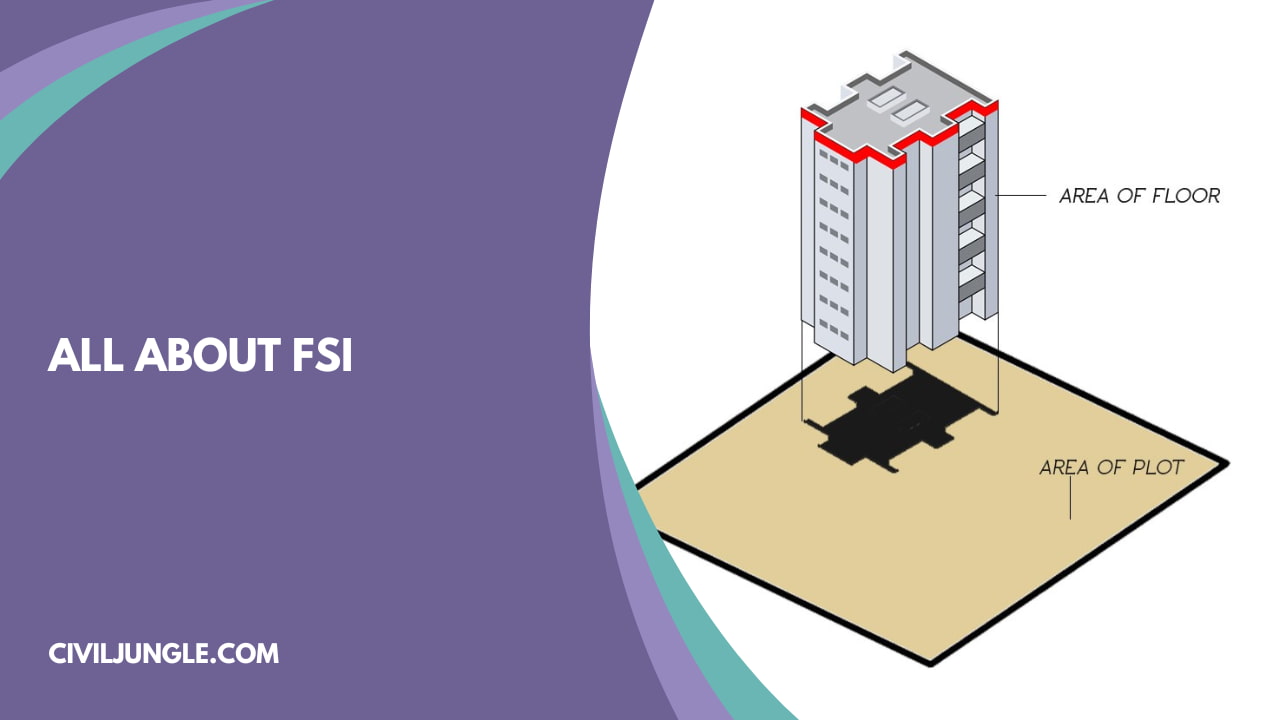
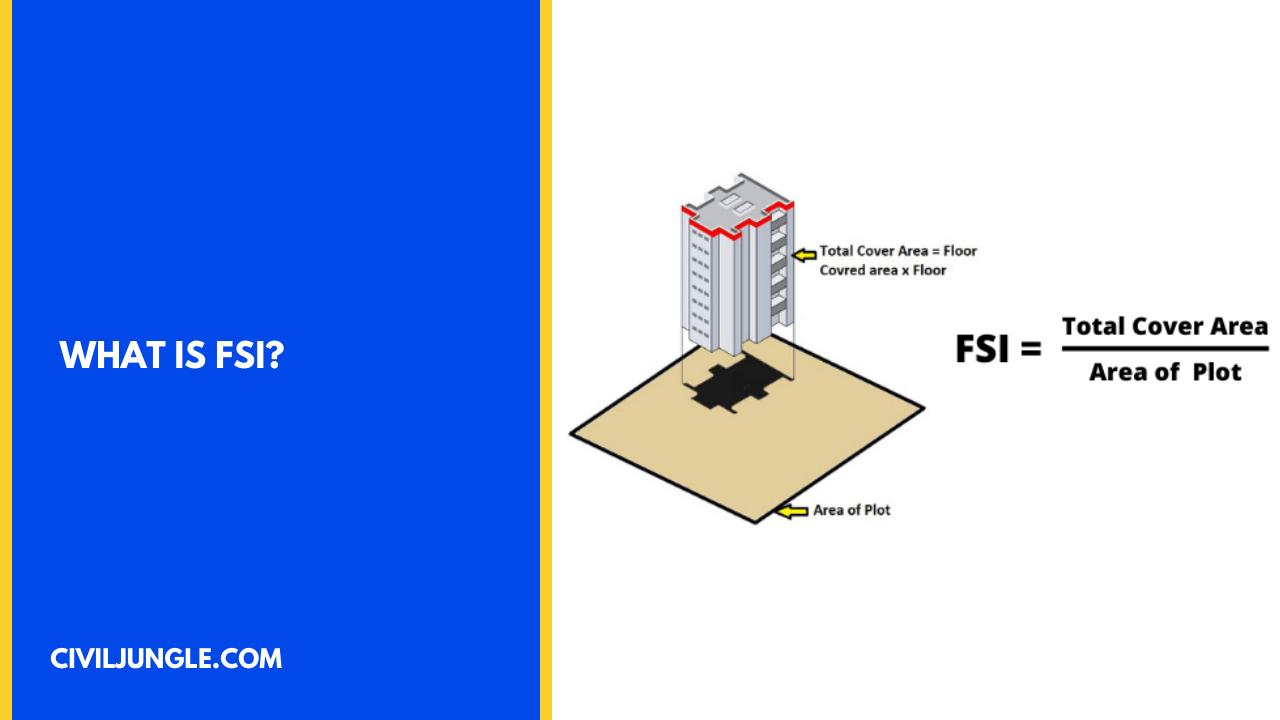
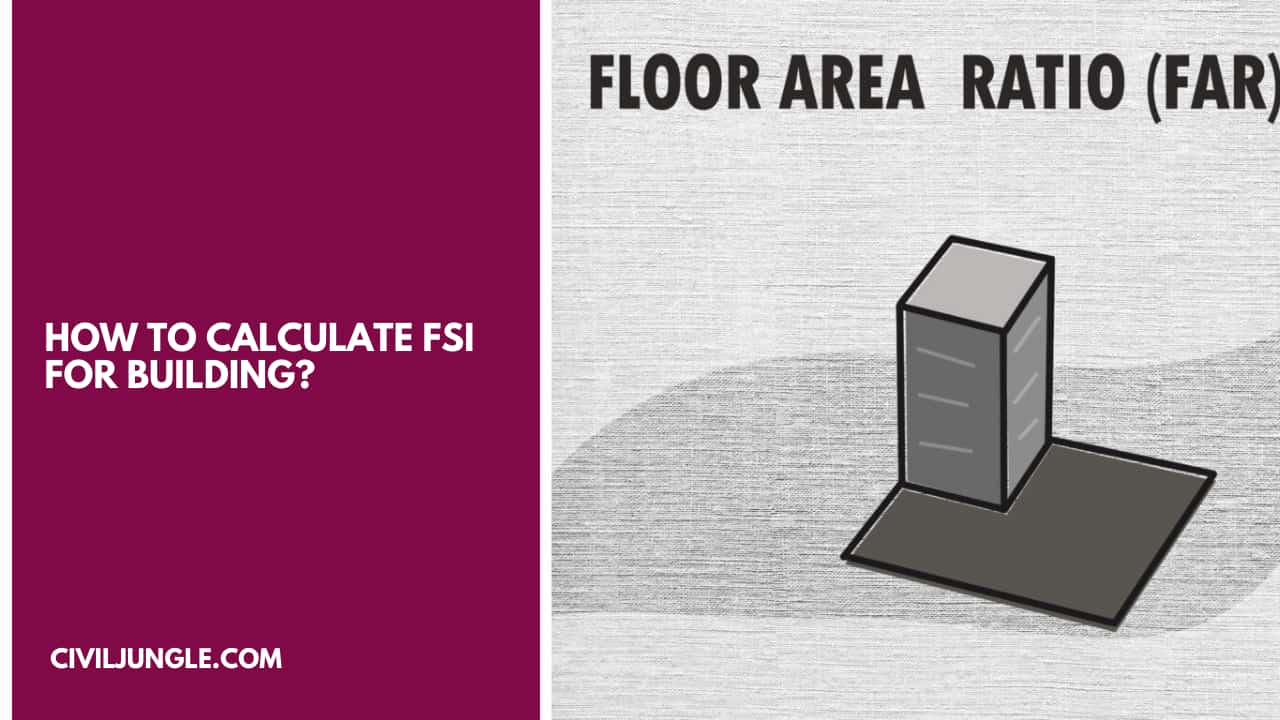
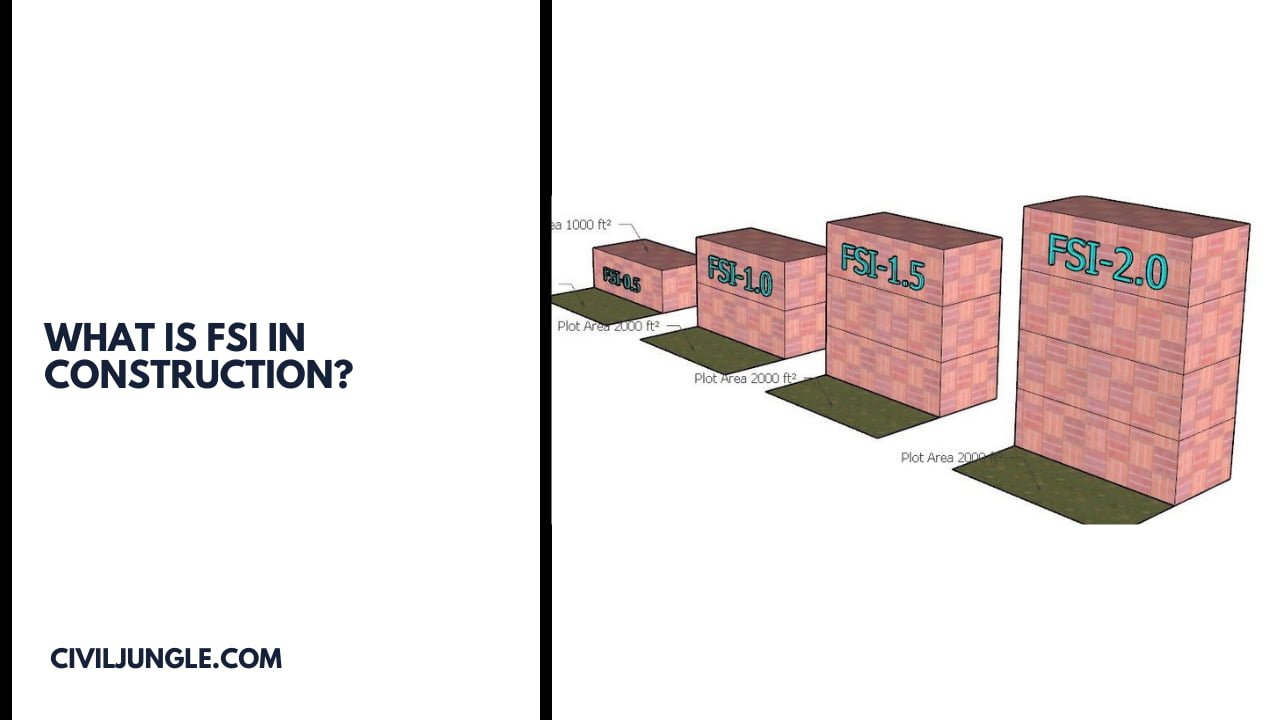
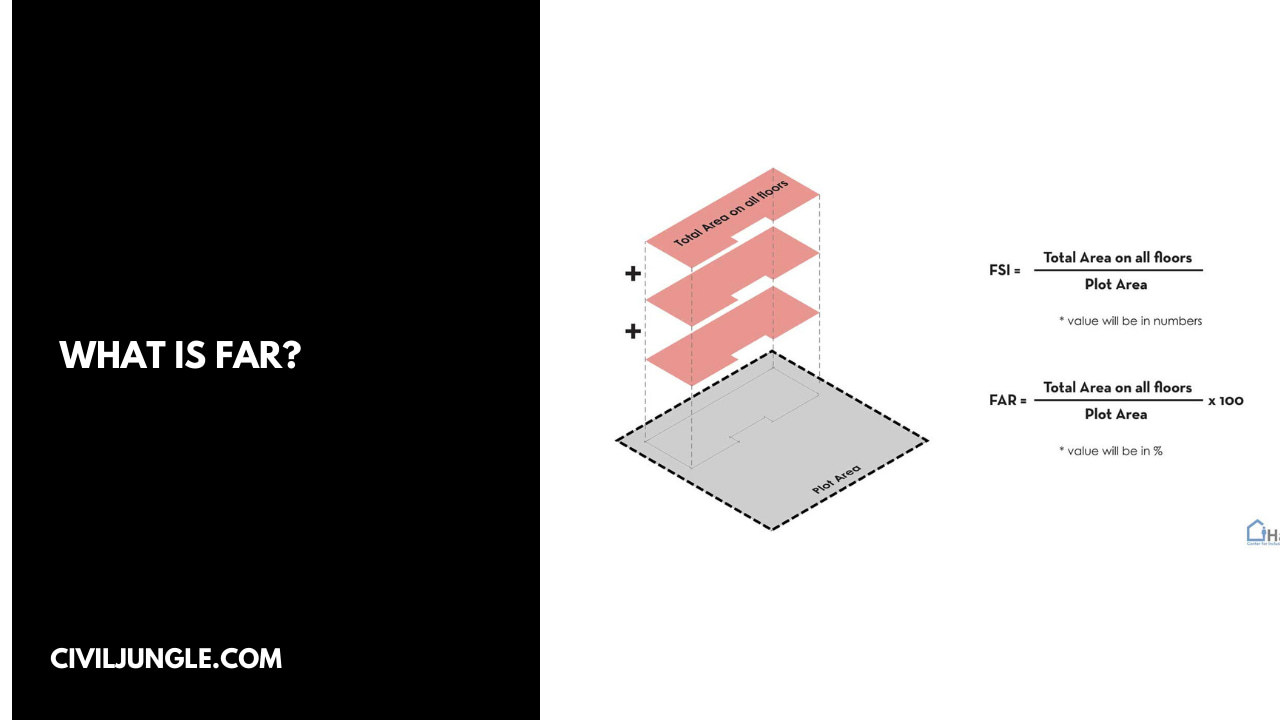

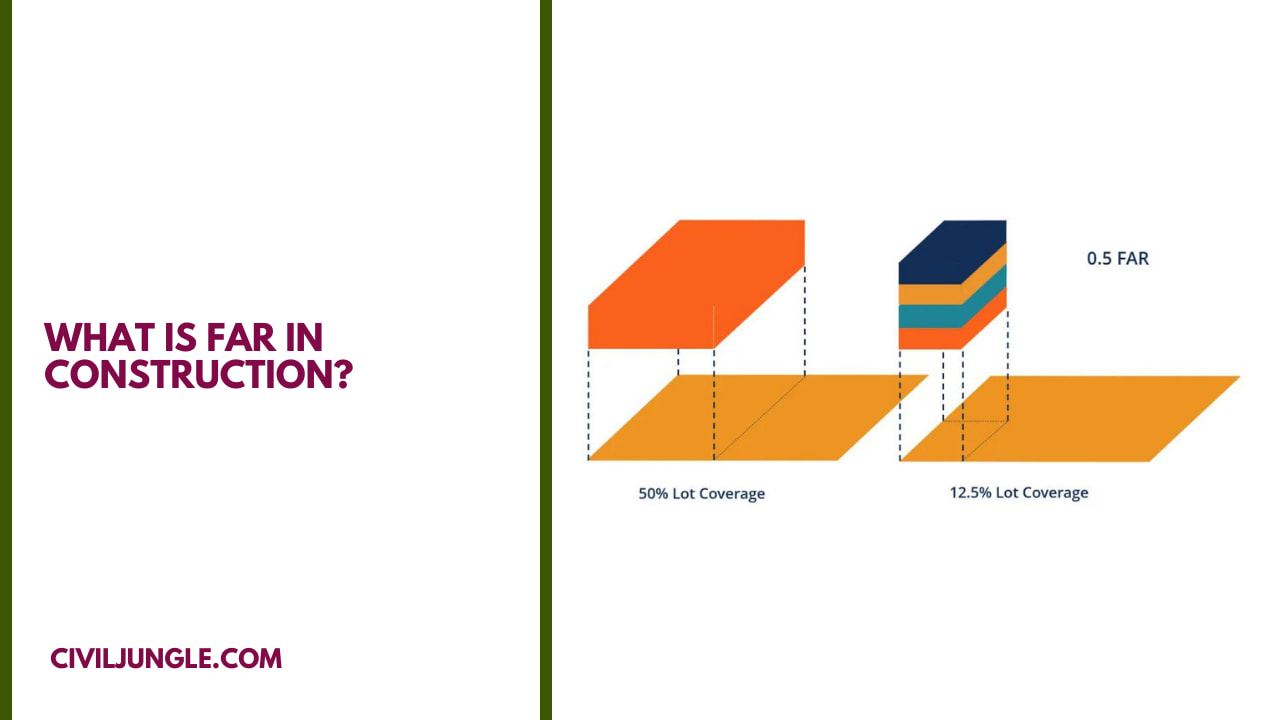
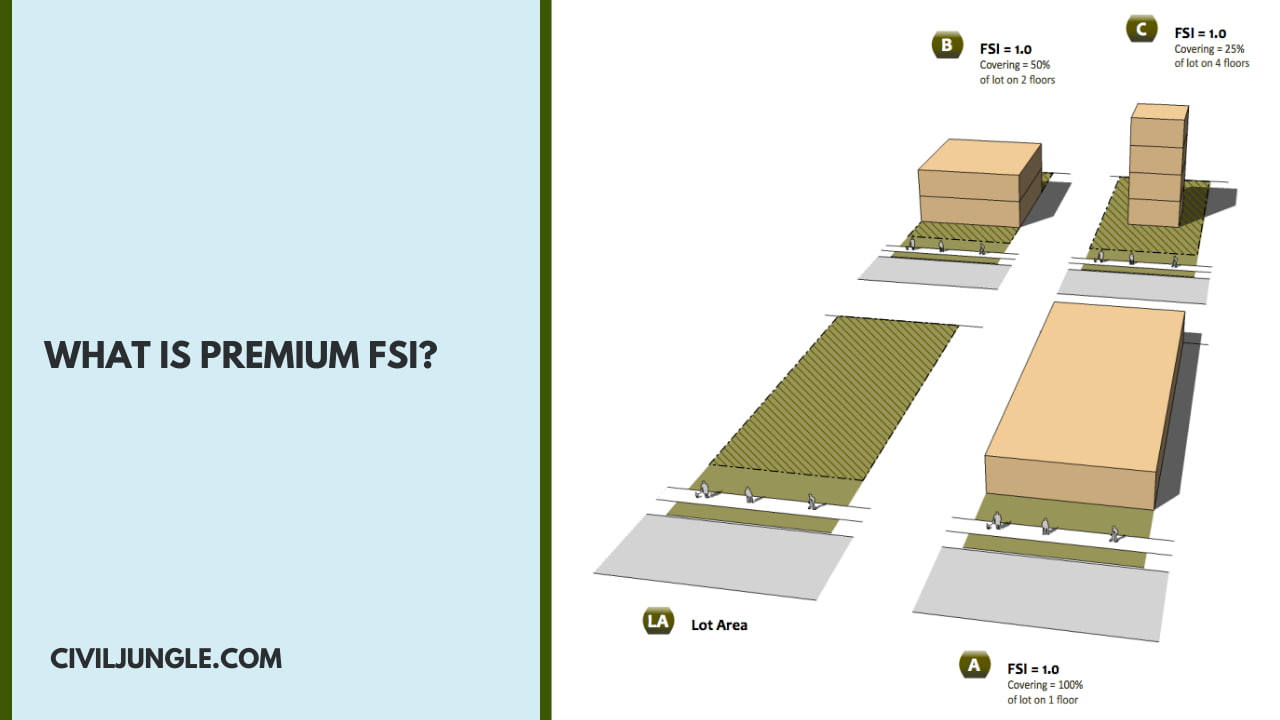

Leave a Reply